Is your ongoing PPC effort being evaluated effectively? In other words, how do you recognize which elements of your PPC advertising ultimately led to the sale or conversion?
The best way to understand and evaluate which campaigns, ad groups, and keywords are working is to use PPC attribution models. It is often used by performance agencies with their clients so that they know what the effective methods for focusing efforts are.
Before we take a closer look at the PPC attribution model, let’s start with what PPC ads are.
What Are PPC Ads?
The term PPC stands for pay-per-click. A pay-per-click ad is an online marketing method where advertisers pay only when a user clicks.
Ads on search engines, such as Google Ads, are the most common form of PPC advertising. It is a platform where advertisers bid on keywords. As a result, their ads will appear at the top of search engine results pages (SERPs).
Apart from PPC advertising on the website, it can also be done on social media platforms like Facebook and Instagram. This strategy is commonly used by performance agencies when they feel their clients’ social media platforms present a good business opportunity. They are experienced in knowing which advertisement has a more effective attribution model. Because of their knowledge, it is easy for them to identify which touchpoint is collecting revenue. So they can find a way to focus on this winning strategy and improve even more.
Now let’s learn about PPC attribution and how effective PPC is.
PPC Attribution Models: What Are They?
PPC attribution models are rules that define how much credit is allocated to various touchpoints and conversions along the digital consumer cycle.
These rules assign a predetermined amount of credit to each click so that you can determine which elements contribute to your bottom line – even if they do not directly result in conversions.
For instance, PPC attribution models help in answering questions like:
- Which one of these keywords should I use?
- From where did these visitors convert?
- Did these conversions lead to real sales or people signing up for events?
- Is my top-of-funnel campaign performing well?
Because of PPC attribution models, you can better understand what is happening with your PPC ads. And there’s a good chance that you’ll save more money and get quality PPC leads when you know which ad attribution has winning performance.
Why Should You Use PPC Attribution Models?
According to Nielsen, it takes customers 6 visits to a website before they convert. When a user makes multiple visits before converting, attribution models can be used to figure out how much of the final revenue should be attributed to each click.
Each touchpoint or conversion can be assigned a different value in PPC attribution models according to the goals and significance of the activity. When attribution is not in place, gathering insights and information about your PPC campaigns is extremely challenging, if not impossible.
Different PPC Attribution Models
There are six different attribution models for your PPC advertising and Google Analytics.
These attribution models are used to find correlations between campaigns. Here are the differences between the 6 PPC attribution models.
First Interaction Attribution
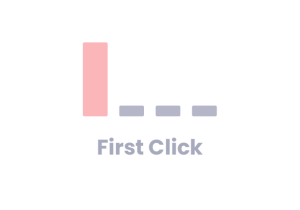
Under this attribution model, the first marketing channel a customer engages with receives full credit for the conversion. If a customer discovers your client’s company on Pinterest, for example, Pinterest will get credit for the sale.
And it makes no difference if, a week later, this same customer clicked on a Facebook ad and ended up on your client’s website. Pinterest will continue to receive full credit for any conversions made in the First Interaction Attribution Model.
If your client has a high rate of immediate conversions, this marketing attribution model will benefit them. The significance of the initial point of contact cannot be overstated.
The First Interaction Attribution Model is useful in pay per click lead generation for determining which channels are most productive in bringing in new customers at the top of the sales funnel. It’s also an excellent indicator of the efficacy of different promotion methods.
Last Interaction Attribution
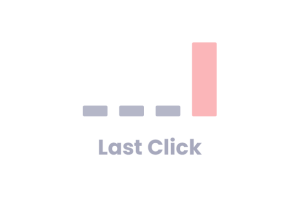
The Last Interaction Attribution model attributes the entire value of a customer’s conversion to their last point of contact with your client’s business. Last-click or last-touch are two of its common names.
Here’s a case in point. Let’s say a potential client conducts a search for your company on Facebook and finds it. A week later, they visited the website after clicking on one of your client’s Instagram ads. They haven’t made up their minds to convert just yet, but they are familiar with your client’s brand already.
The buyer spends a week deliberating before conducting an online search for your client’s brand and making a purchase. If a customer uses search terms to locate your client’s website, that branded search touchpoint will receive full credit for the conversion.
This is the default attribution method used by most platforms, including Google Analytics. Each conversion goal in a standard Google Analytics report represents a customer’s last touchpoint with your client’s business.
Nowadays, digital marketing is all over the place. Your customer’s website visitors might use a wide variety of computers, browsers, and devices. This makes it difficult to monitor the customer’s entire journey.
With the Last Interaction Attribution Model, however, you can be certain that the last touchpoint a customer had with your client’s brand was directly before conversion.
If your client has a short buying cycle, this model is a good alternative to the First Attribution Model. Thus, keeping tabs on the final touch point is a good, though limited, indicator of which of your client’s marketing channels is most effective at generating sales.
And if you’re serious about understanding how to measure sales performance, then this is also a useful aspect to keep an eye on. It’s not just about turning a watchful eye to marketing channels, but also monitoring as well as motivating your team with meaningful metrics that can inform future decisions.
Last Non-Direct Click
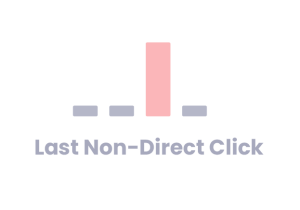
One hundred percent of the credit for a conversion is placed on a single interaction in this marketing attribution model. However, this model does not account for the “direct” interactions that normally occur immediately before a customer makes a purchase.
Here’s a case in point. Let’s pretend a potential customer learns about your client’s website through a LinkedIn ad. They sign up for the mailing list of your client and begin receiving newsletters after clicking on a few interesting links.
This customer has been active with your client’s newsletters for some time. A few weeks later, they immediately convert to your client’s website.
In the last non-click attribution model, email marketing is given credit for the conversion rather than direct traffic (the customer going directly to your client’s website). Therefore, this marketing attribution model considers the source of the customer’s direct traffic to the client’s website.
If visitors to your client’s website typically purchase upon arrival, the last non-direct click model will likely be ineffective. You can optimize content and maximize this opportunity if you know which marketing channel played a role in the conversion decision.
Linear Attribution
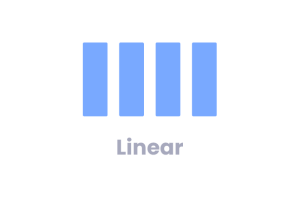
A linear attribution model splits conversion credit equally between all brand touchpoints.
Let’s use our previous example. A customer signs up for your client’s mailing list after finding them on social media. Later, this customer visited the website of your client and successfully made a $150 online purchase.
There are three touchpoints in this scenario. In numerical terms, each touchpoint receives a 33% conversion credit and a $50 conversion value.
This is a good option if you’re looking for a simple way to describe the impact of your client’s marketing channels. A startup may find it useful because it doesn’t require complicated metrics or analytics.
The term also refers to giving equal importance to all marketing channels. Due to this, this model may not be the most effective.
Time Decay Attribution
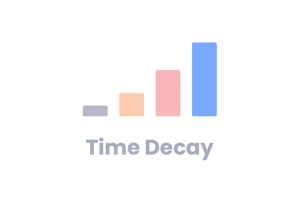
Conversion credit is spread across multiple events with time decay attribution. A brand interaction is considered in this marketing attribution model based on when it took place.
In addition, later touch points are given higher conversion credit. This means the last interaction counts for more than the first one.
Customers who have higher-priced offerings and longer sales cycles will benefit most from the time decay attribution model.
Position-Based Attribution
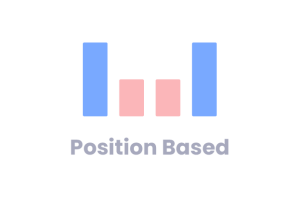
The position-based attribution model (also known as U-shaped attribution) allocates credit for conversions as follows:
- A customer’s first touchpoint (40%)
- A customer’s last touchpoint before conversion (40%)
- Other brand touchpoints between the above stages (20%)
Imagine a scenario in which a potential customer uses Google to find your client’s online store. They check out your client’s Facebook page and end up subscribing to email marketing. The customer then takes the next step toward conversion by responding to the newsletter’s call-to-action.
In this case, 40% of the credit for the conversion goes to the initial website visit from the Google search, and 40% goes to the email marketing sign-up. The remaining 20% of the conversion credit goes to the intermediary touchpoint (such as a visit to a Facebook page).
Businesses that rely on multiple customer touchpoints before the conversion will benefit greatly from position-based attribution.
This credit allocation model implements a systematic approach that assigns credit to every interaction, rendering it an advantageous solution for enterprises aiming to amplify brand visibility and drive sales growth. Notably, it comprehensively incorporates the impact of additional touchpoints, thus providing a holistic perspective on the matter.
In Conclusion
PPC attribution models specify how you’ll divide up the credit for a sale among all the digital channels your customers interact with. Knowing this will help you a lot because you will better understand how your customer’s buying journey is happening. You can think of a more effective conversion strategy because there is data from your PPC attribution model, and it is easy for you to create an effective campaign with good revenue.












